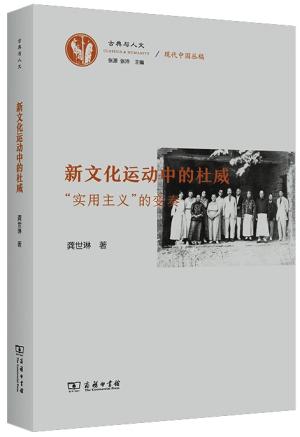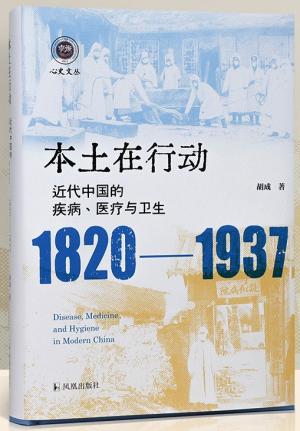新書推薦:

《
新文化运动中的杜威——“实用主义”的变奏
》
售價:NT$
383

《
世界两栖战舰和两栖作战百科全书
》
售價:NT$
2030

《
藩镇时代
》
售價:NT$
500

《
国家记忆:故宫文物南迁史
》
售價:NT$
862

《
时间的朋友
》
售價:NT$
301

《
士变:近代中国的思想转折
》
售價:NT$
449

《
本土在行动:近代中国的疾病、医疗与卫生(1820-1937)(学衡心史文丛)
》
售價:NT$
500

《
生活中的逻辑学
》
售價:NT$
347
|
| 內容簡介: |
|
《气液两相流动和沸腾传热》涵盖了气液两相流动的全部基础内容,包括两相流动学科的发展历程、研究方法;两相流动的基本参数;两相流动的流型和判定方法;两相流动压降的计算;气液两相临界流动;两相流动不稳定性;沸腾传热介绍;过冷沸腾时空泡份额和压降的计算;两相流动中常用的测量方法。
|
| 目錄:
|
Chapter 1 Introduction
1.1 What is Two-Phase Flow
1.2 Methods of Analysis
1.3 Notation
Chapter 2 Flow Pattern and Flow Pattern Map
2.1 Introduction
2.2 Flow Patterns in Vertical Flows
2.2.1 Flow patterns in vertical co-current flow
2.2.2 Flow patterns in vertical heated channels
2.3 Flow Patterns in Horizontal Flows
2.3.1 Flow patterns in horizontal co-current flow
2.3.2 Flow patterns in horizontal heated channel
2.4 Flow Pattern Maps and Transitions
2.4.1 Typical flow pattern maps
2.4.2 Criteria for flow pattern transitions
2.5 Flow Patterns in Other Applications
Chapter 3 Basic Models
3.1 Introduction
3.2 Drift Flux Model
3.3 Two-Fluid Model
3.4 Homogeneous Model
3.4.1 Conservation of mass
3.4.2 Conservation of momentum
3.4.3 Conservation of energy
3.5 Separated Flow Model
3.6 Overview
Chapter 4 Empirical Methods for Pressure Drop
4.1 Introduction
4.2 Correlations Based on the Homogeneous Model
4.3 Correlations Based on the Separated Flow Model
4.3.1 Correlations from momentum balance
4.3.2 Use of model to evaluate pressure loss
4.3.3 Determination of the two-phase multiplier
4.4 Pressure Losses Through Enlargements,Contractions,Orifices, Bends, and Valves
4.4.1 Sudden enlargement
4.4.2 Sudden contraction
4.4.3 Orifices
4.5 Annular Flow
4.6 Void Fraction
4.6.1 Homogeneous model
4.6.2 Drift-flux model
4.6.3 The Bankoff variable density model
4.6.4 The Hughmark correlation
4.7 Conclusions
Chapter 5 Two-Phase Critical Flow
5.1 Introduction
5.2 Theoretical Foundations
5.3 Critical Flow in Long Pipes
5.4 Critical Flow in Short Pipes, Nozzles and Orifices
5.5 Propagation of Pressure Pulses and Waves
Chapter 6 Introduction to Hydrodynamic Instability
6.1 Introduction
6.2 Classifications of Two-Phase Flow Instabilities
6.3 Physical Mechanisms of Static Instabilities
6.3.1 Fundamental static instability
6.3.2 Fundamental relaxation instability
6.3.3 Compound relaxationinstability
6.4 Physical Mechanisms of Dynamic Instabilities
6.4.1 Fundamental dynamic instability
6.4.2 Acoustic instability
6.4.3 Density-wave oscillations
6.4.4 Pressure-drop oscillations
6.4.5 Condensing instability
6.4.6 Thermal oscillations
6.4.7 Boiling water reactor instability
6.4.8 Parallel channel instability
6.5 Approaches in Two-Phase Flow Stability Analysis
6.5.1 Direct numerical analysis
6.5.2 Frequency-domain analysis
6.6 Situations Where Instability Arise
6.7 The Designer''s Requirements
6.8 Problems Arising in the Application of Models and Tests to Designs
Chapter 7 Introduction to Nucleation in Boiling
7.1 Vapor-Liquid Equilibrium
7.1.1 Equilibrium criterion
7.1.2 P-u-T diagram
7.1.3 Equation of state
7.1.4 Metastable state
7.1.5 Clausius-Clapeyron equation
7.1.6 Thermodynamic equilibrium at a curved interface
7.2 Homogeneous Nucleation
7.2.1 Equilibrium condition for a embryo bubble
7.2.2 Mechanism of nucleation
7.3 Heterogeneous Nucleation
7.3.1 Contact angle and wettability
7.3.2 Nucleation at solid surfaces
7.3.3 Nucleation from entrapped gas or vapor in cavities
7.3.4 Size Range of Active Nucleation Sites
7.4 Bubble Dynamics
7.4.1 Bubble growth in an extensive liquid pool
7.4.2 Bubble growth near heated surfaces
7.4.3 Diameter and frequency of Bubble departure
Chapter 8 Pool Boiling
8.1 Nukiyama Boiling Curve
8.2 Regimes of Pool Boiling
8.3 Nucleate Boiling
8.3.1 Inception of boiling Onset of Nucleate Boiling
8.3.2 Heat transfer mechanisms in nucleate boiling
8.3.3 Nucleate Pool Boiling Correlations
8.4 Departure From Nucleate Pool Boiling
8.4.1 Transitional boiling regime and Taylor instability
8.4.2 Helmholtz instability of vapor jets
8.4.3 Prediction of critical heat flux
8.5 Film Boiling
8.6 Minimum Heat Flux
Chapter 9 Flow Boiling
9.1 Regimes of Convective Boiling in Tubes
9.2 Onset of Boiling in Internal Flows
9.3 Subcooled Flow Boiling
9.3.1 Regimes of subcooled flow boiling
9.3.2 Methods of predicting partial subcooled flow boiling heat transfer
9.3.3 Void fraction and pressure drop in subcooled boiling
9.4 Saturated Flow Boiling
9.4.1 Regimes of saturated flow boiling
9.4.2 Heat transfer correlations for saturated flow boiling
9.5 Critical Heat Flux in Flow Boiling
9.5.1 Mechanisms
9.5.2 Prediction of CHF in flow boiling
ReFerences
|
|










